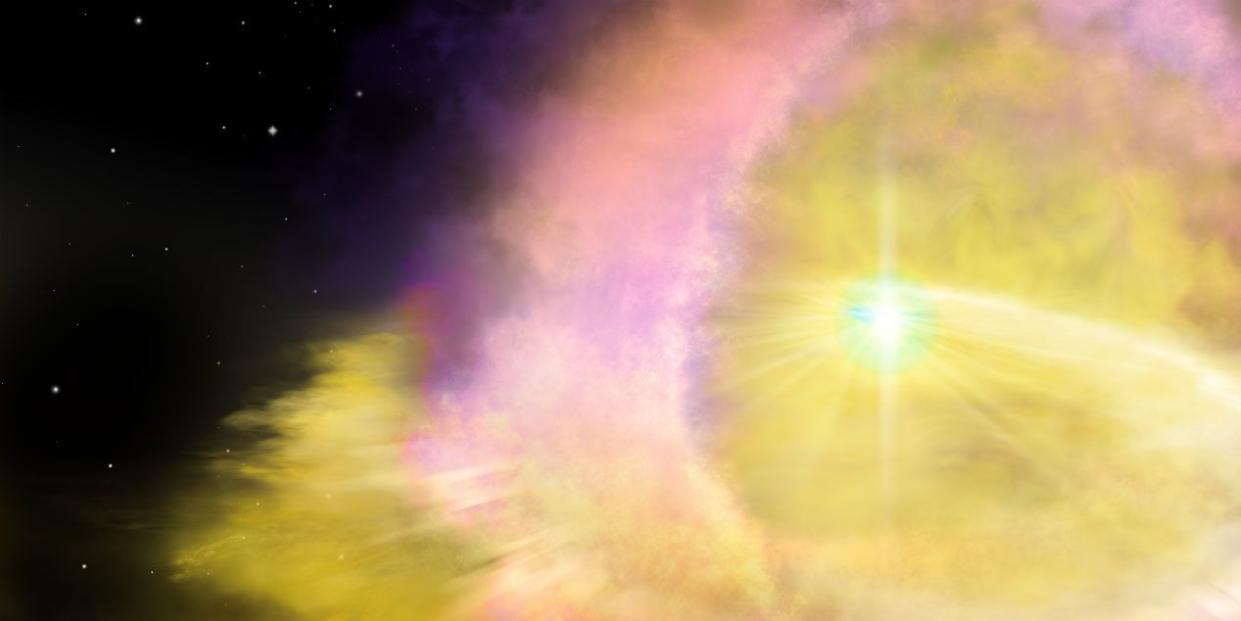This Is the Brightest Supernova Ever Observed, and It's Magnificent

Astronomers have spotted the brightest supernova ever seen.
The scientists first detected the supernova event, called SN2016aps, at Hawaii’s Panoramic Survey Telescope and Rapid Response System observatory in 2016.
Witnessing a rare supernova like this could reshape our understanding of how high-mass stars die.
The brightest supernova ever observed is so blinding, it outshines the galaxy in which it's found.
On February 22, 2016, astronomers using Hawaii’s Panoramic Survey Telescope and Rapid Response System observatory spotted the supernova, which they dubbed SN2016aps. They’ve been studying it ever since.
The astronomers say SN2016aps is so bright that for the past four billion years, it has blotted out the light of its surrounding galaxy, an unnamed cluster of stars about 4 million light-years away. For over 1,000 days, SN2016aps emitted a record-breaking amount of radiation into space.
But SN2016aps wasn't just the brightest supernova ever seen. Gizmodo reports it was also the most massive supernova ever observed—between five to 10 times more massive than your run-of-the-mill supernova, and 50 to 100 times more massive than the sun.
“A very massive star like this might be more common in the very early universe,” astronomer Matt Nicholl, of the University of Birmingham in the U.K., told Gizmodo. “We might be able to use this data to peer back in time to see the explosions of some of the very first stars.”
Back in January, there was speculation that one of the brightest stars in the night sky, Betelgeuse, might be entering its own supernova phase due to a bout of uncharacteristic dimming. (Astronomers have largely debunked the theory.) Were it to go supernova in our lifetime, even at night, the explosion would shine brighter than the sun.
The team that spotted SN2016aps, which includes astronomers from the Harvard & Smithsonian Center for Astrophysics, believes this blinding explosion is the result of what’s called a “pulsational pair-instability supernova,” where stars with incredibly high masses—higher than what we’ve seen in our own galaxy—go supernova and set off a nuclear reaction that leaves nothing behind.
To complicate things further, the supernova emitted a ton of hydrogen, the scientists say—much more than usual. This suggests the particular event could have occurred after two smaller stars combined before going bust. Astronomers hope spotting an especially rare supernova like this one will provide clues about the death of other large stars in the distant universe.
We’re approaching a new era in astronomy as scientists eagerly await the launch of the James Webb Space Telescope, which is slated to lift off in the next few years. (It’s unclear how production delays caused by the spread of the novel coronavirus will impact the mission’s timeline.)
Once the sun-orbiting telescope reaches its perch at L2, a spot 1 million miles away from Earth, it will begin to snap pictures of the universe in greater detail than we’ve ever seen. We can’t wait.
You Might Also Like

